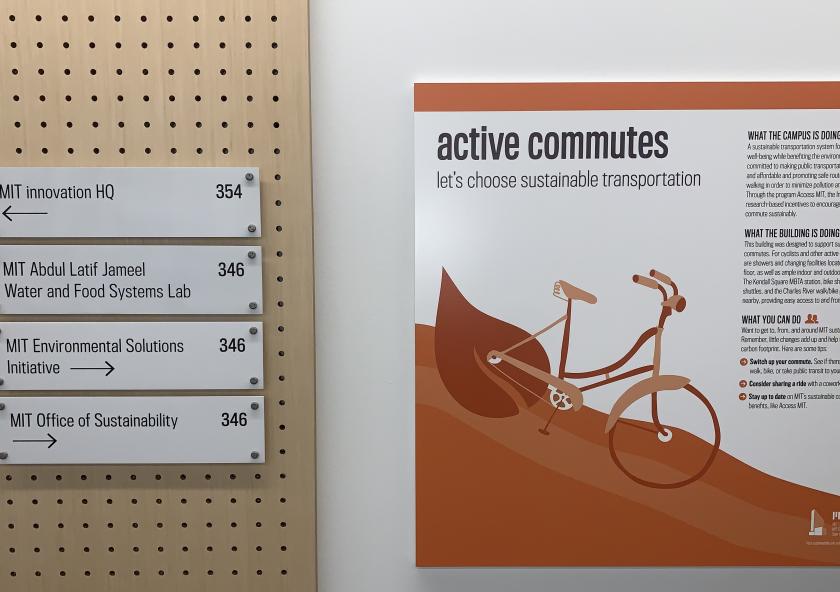
Supporting sustainable spaces with green building education

As the new E37/E38 neared completion in 2020 and worked toward LEED Gold certification, a Green Building Education credit was pursued as part of the sustainable design and construction plan. A team made up of representation from MITOS, Campus Construction, Systems Performance and Turnover, and in partnership with an external designer, developed a signage program to educate building occupants and visitors on the benefits and features of E37/E38’s innovative design. The resulting display in the lobbies of E37 and E38 highlight topics ranging from community connection to climate resiliency to health and well-being. Each floor of E38 also contains more detailed information on an occupant relevant sustainability topic such as transportation and waste, with artwork designed by an MIT Architecture student. The same team is supporting additional green building education projects, including the renovated Hayden Library and New Vassar dormitory. Explore some of the signs that can be found in E38 or stop by to explore the sustainability features and signage in person.

